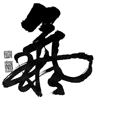Welcome to Peace Movement Qigong!

"Energy Work"
Qigong (pronounced ďchee-gongĒ) is a practice rooted in Chinese philosophy and energy medicine. ¬†ďQiĒ is the vital energy force that flows through the human body and all living things, and the word ďgongĒ means work or skill, making Qigong a form of energy work. The gentle, flowing movements and rooted postures of Qigong coordinated with relaxed breathing and a quiet mind serve to activate, refine, circulate and harmonize the qi.
History

Qigongís roots are deep and primitive. ¬†Although we have not yet found a definitive resource to indicate the precise beginnings of Qigong, ancient texts and relatively recent archeological discoveries have given us historical perspective. ¬†Without actually using the term ĎQigong,Ē evidence of healing Qigong-like methods date back approximately 5,000 years ago in the form of shamanic dances imitating animal movements. ¬†The term ďQigong,Ē however, was not used in its present context until the 20th century. ¬†Earlier in history Qigong was known by other names, including Dao Yin, Yang Sheng, Tu Na, Xing Qi and Nei Gong.
One of the more significant historical documents dating back to 168 B.C.E. was discovered in Hunan Province as recently as 1973 when the tomb of King Ma was excavated.  A silk painting of men and women in various qigong postures was discovered, complete with descriptive captions near most of the figures.  Now know as the Dao Yin Tu or Dao Yin illustrations, students continue to marvel at the insights provided by this ancient relic.
An even earlier discovery from about 500 B.C.E. is an inscription carved in jade describing the process of circulating the qi, and concluding that following this process will lead to life while opposing the process will lead to death.
Yin & Yang

Qigong should be practiced with a basic understanding of yin and yang Ė a theory based upon two complementary opposites used to explore patterns, relationships and transformations. ¬†The yin-yang symbol (seen here) is a simple circle divided in to yin (black) and yang (white). ¬†The division is not absolute, but is represented by a curved line with a small circle of yin on the yang side, and yang on the yin side Ė a design that illustrates the continuous merging, transformation and spontaneous harmony of the two opposites.
In Qigong we are asked to make the distinction between yin and yang in movement, stillness, breathing and the focus of the mind.  For instance, as we perform a movement that requires a weight shift from one leg to the next, we become aware of which leg has the most weight (full, substantial or yang) and which leg carries the least weight (empty, insubstantial or yin).  The weight then shifts, transferring the yin and yang qualities between the legs.  An advanced student will continue to explore the many ways that yin and yang distinctions create, control and transform into one and other.
The circulation and harmony of Qi following the yin-yang theory is one major way that movements evolve into a true Qigong practice, benefiting body, mind and spirit, as opposed to a stagnating, empty set of calisthenics.
Craft & Art
Qigong should be approached as both a craft and an art, learned from the outside, in (craft) and practiced from the inside, out (art).  
As you learn a new form, it is important to perform the mechanics of the movements correctly.  Where is the weight placed?  What is the lower body doing in relation to the upper body?  What pattern does the arm follow?  How are all of the body parts coordinated to serve the whole body connection?
When you become more comfortable with the mechanics of the movements you then develop the art of your practice. Exploring the quality of energy used to perform the movement, internal awareness, intent and expression of the energetic connection will help to develop your practice as an art form.
Like yin and yang, the craft and art of Qigong are mutually dependent on each other and both are part of a complete practice.  It is possible that a dedicated student taught by a competent instructor may learn the craft of a particular form in a matter of months.  The art of Qigong, however, is a lifetime endeavor.  Those dedicated will not find themselves tortured by this unending quest, but will experience joy, health and harmony in increasing increments with passing time.
Qigong Styles
There are over 7,000 styles of Qigong. Some styles specialize on healing, spirituality or athletic performance, while other styles seek to coordinate all three of these areas. ¬†There are ancient, classical practices such as Five Animal Frolics or Bone Marrow Cleansing, and modern practices like Tíai Chi Chih and Tíai Chi Qigong in 18 Forms. ¬†Taiji Quan (Tíai Chi Chuan) is one of the more popular martial arts forms falling under the Qigong umbrella.
Benefits of Qigong
Correct and consistent practice of Qigong should produce initial benefits during the early learning stages, with continued gains evident during a studentís advancement.
Many Qigong techniques incorporate gentle, flowing movements making them suitable for a wide range of students Ė men and women, old and young, super-athletes as well as those with significant physical limitations. ¬†Most of the movements and postures are done from a standing position but may be adapted to seated positions as well.
Potential Benefits of regular practice include:
- Stress Reduction
- Increased Energy and Endurance
- Management of Chronic Ailments
- Enhanced Creativity
- Mental Clarity
- Improved Athletic Performance
- Improved Balance
Peace Movement
Qigong movements will enable your quest for inner peace and universal awareness.  It is practiced by millions worldwide, transcending geographic, religious and political boundaries.  As dedicated students practice with a quiet mind and relaxed body, they experience a joyful awareness of the vital energy force within, while sensing a shared energetic connection with nature and all humanity, making Qigong a gracious and worthy PEACE MOVEMENT.
